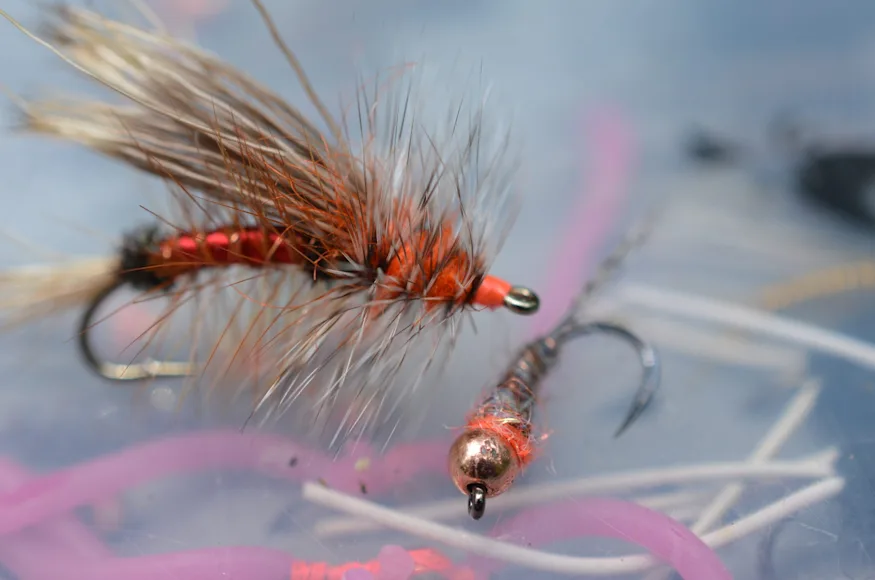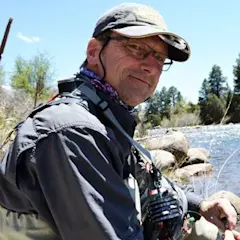Like a lot of fly fishing
guides these days, Tom Sadler likes to boost his clients’ chances of catching trout by having them fish with two flies instead of one. He sets them up with the kind of rig known as dry dropper: one floating dry fly and one fly, usually a nymph pattern, drifting below the surface.
“As a guide I like to give the client as many opportunities to catch a fish as I can,” said Sadler, who’s also a conservation lobbyist and outdoor journalist and lives in Virginia. “For instance, if I use a strike indicator, I’ve just eliminated one possibility to hook the fish. If you haven’t had a fish a hit bobber, you haven’t fish long enough. It is a total bummer when it happens with a client. Opportunity lost.”
Fly anglers have used multi-fly rigs for centuries, for the obvious reason that more flies equals more chances to catch a trout. One of my own earliest fly fishing memories is of catching a nice brown on the Battenkill on a store-bought “cast” of three wet flies. A dry-dropper rig is a more modern approach, a natural evolution of nymphing with a strike indicator in which the indicator is replaced with a dry fly.
**Read Next: 7 Foolproof Cheat Flies to Catch More Trout
**
Often enough, as Sadler says, you’ll catch trout on the dry fly, especially if there’s some surface feeding going on. Probably more often, trout will bite the nymph, since they generally feed more underwater than on top. The dry fly plays the same roles as a strike indicator: suspending the nymph at the right depth, and stopping, twitching or being pulled under when a fish strikes down below. Somehow, waiting for a dry fly to bob is more fun than waiting for a bobber to bob.
A dry-dropper can also be effective during a hatch. You may have seen a dun (that is, fully emerged) mayfly float downstream untouched, while a trout takes with a bulging rise right next to it. The trout took a mayfly caught in the clumsy transition from nymph to dun, just a couple of inches deep. Try a dry-dropper rig with a shallow-running wet fly or unweighted nymph. The emerger will address the trout’s preference for food just below the surface, and the dry fly will indicate the strike. Meanwhile, your next trout may prefer the floating fly.
How to Rig a Dry-Dropper Setup
The term “dropper” in the name of the rig refers to a short length of tippet sticking out more or less perpendicular to the main tippet. Contrary to what the name suggests, however, it’s the dry fly that’s attached to the dropper, not the nymph. Proponents of a dropper say it allows the dry fly to float more naturally than it would with a relatively heavy subsurface fly hanging from its hook. It’s also much easier to change to a different dry fly, since you don’t have to remove and reattach the nymph tippet.
You can make a dropper by tying a length of tippet to the end of your leader, leaving one of the tags long to serve as the dropper. Some experts suggest using a Uni knot or a Blood knot
. I’d be more inclined to use an easier Seaguar knot, or better yet, the even easier Surgeon’s knot. You can also girth hitch a dropper onto the tippet, above a knot that will keep it from sliding down, a method Tom Sadler sometimes uses to give the dry fly more lifelike freedom to move.
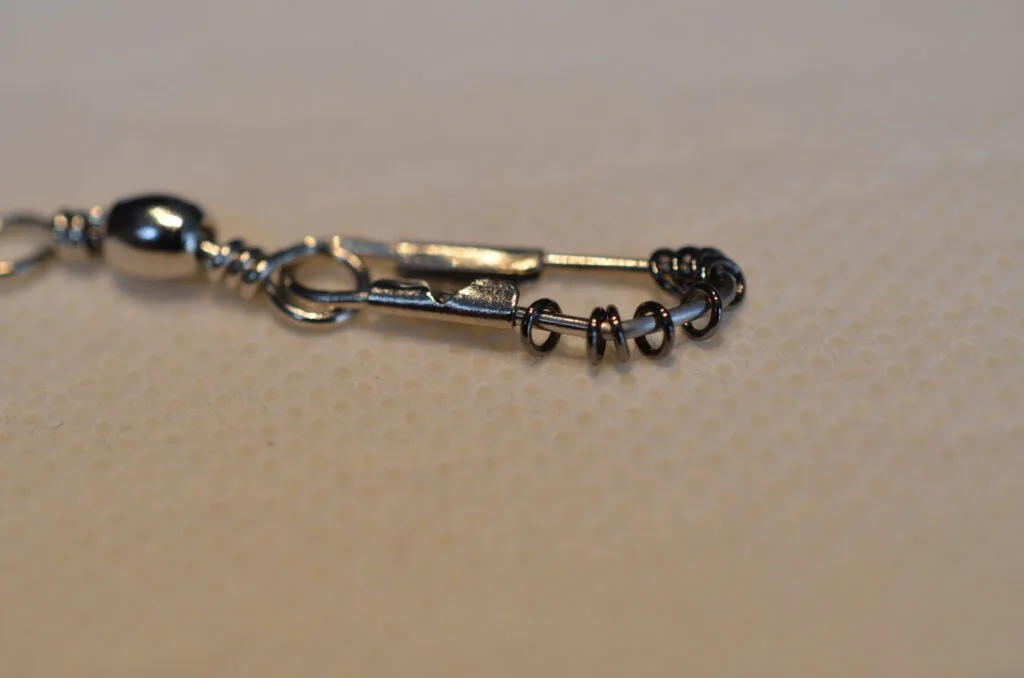
Adding a tippet ring to your rig will lengthen the end of leader. Morgan Lyle
You can also build a dropper with a tippet ring
. These tiny, all-but-weightless metal rings are handy to have on your leader, because you can tie your tippet to them without consuming the end of the leader with knots. For a dry-dropper setup, you can simply tie on two feet of tippet for the nymph and six inches or so for the dry.
But as useful as a genuine dropper may be, I usually make my dry-dropper rigs New Zealand style: Tie on a dry fly, then tie a length of tippet to the bend of the dry fly and tie the nymph onto the other end. One complaint about this arrangement is that if a trout bites the dry fly, the tippet hanging off its hook might interfere with the hook-up. But because it’s an easy rig to build, the Kiwi structure is probably used much more often than true dropper designs, and you don’t hear much about hooking problems with the dry fly. The action mostly centers on the nymph anyway.
Finally, and this is quite important, a New Zealand style rig will tangle far less often than a proper dropper. For me, whatever advantage a dropper may provide is outweighed by the frustration of having to untangle my rig every few casts. If you do choose to use a real dropper, remember to make a slower cast with a wider loop.
4 Effective Trout Fly Combo for a Dry-Dropper Rig
What flies to use? Much of this is angler’s choice. You can hatch the hatch with flies that represent different stages of the same bug, like the dry fly-and-emerger setup mentioned above. In most cases, anglers first choose a trusted nymph, then select a floating fly that’s buoyant enough to suspend the nymph and big enough to be easily seen. Here are a few pairings; you can adapt them based on what flies are in your box and the preferences of your local trout.
1. Stimulator and Frenchie
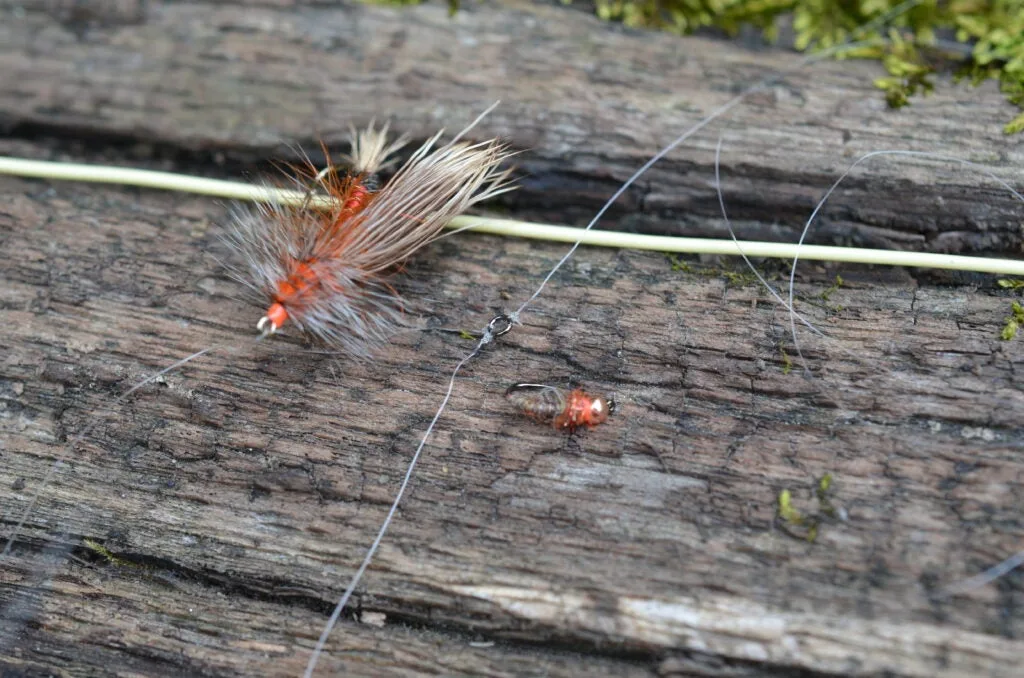
Stimulator and Frenchie dry-dropper rig. Morgan Lyle
The Stimi is an awesome, high-floating dry fly that looks like a caddis or a stonefly, and a large one can suspend a modest-sized Frenchie. Mind the sizes, though. A size 10 Frenchie would drag a size 16 Stimulator straight to Davey Jones’s locker. Reversed, the sizes are about right.
2. Muddler Minnow and Perdigon

Muddler Minnow and Perdigon dry-dropper rig Morgan Lyle
Many of us look forward to the grasshopper fishing
of August and September, and the hopper-dropper is a very popular subcategory of dry-dropper. I’ve always liked using a Muddler Minnow with plenty of floatant for hopper fishing, but any good-sized hopper will work just fine.
3. Adams Parachute and Pheasant Tail
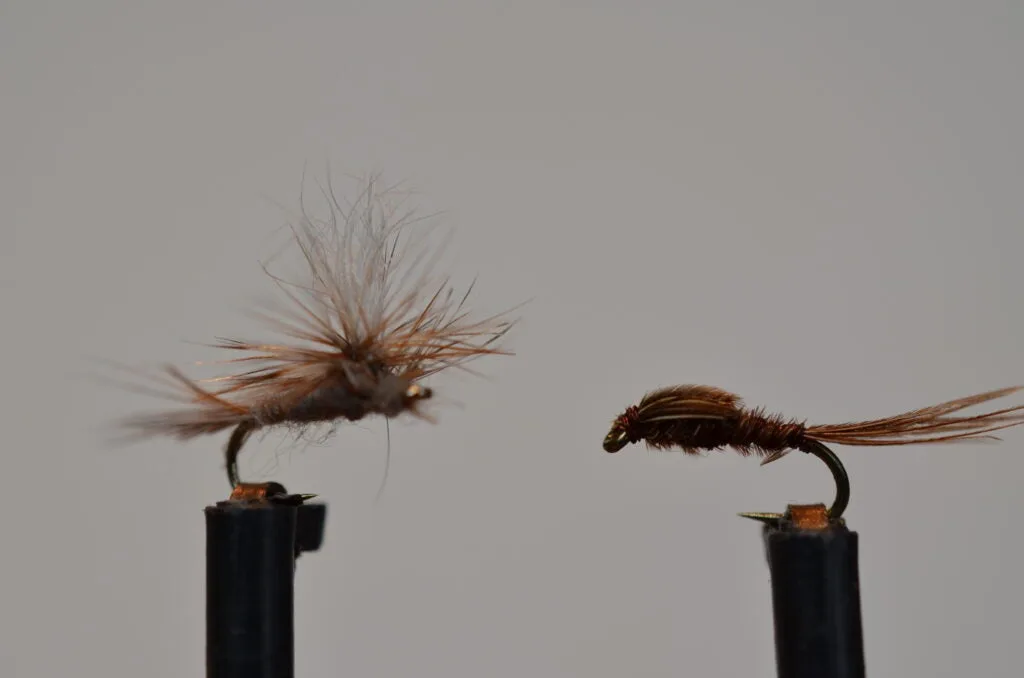
Adams Parachute and Pheasant Tail dry-dropper rig Morgan Lyle
This is an example of a dry-dropper for use when fish are rising to hatching mayflies. Size both flies according to the naturals on the water. Parachute flies in general provide good suspension for nymphs due to the horizontal hackle holding them up on the surface.
4. Chubby Chernobyl and Rubber Legs Nymph
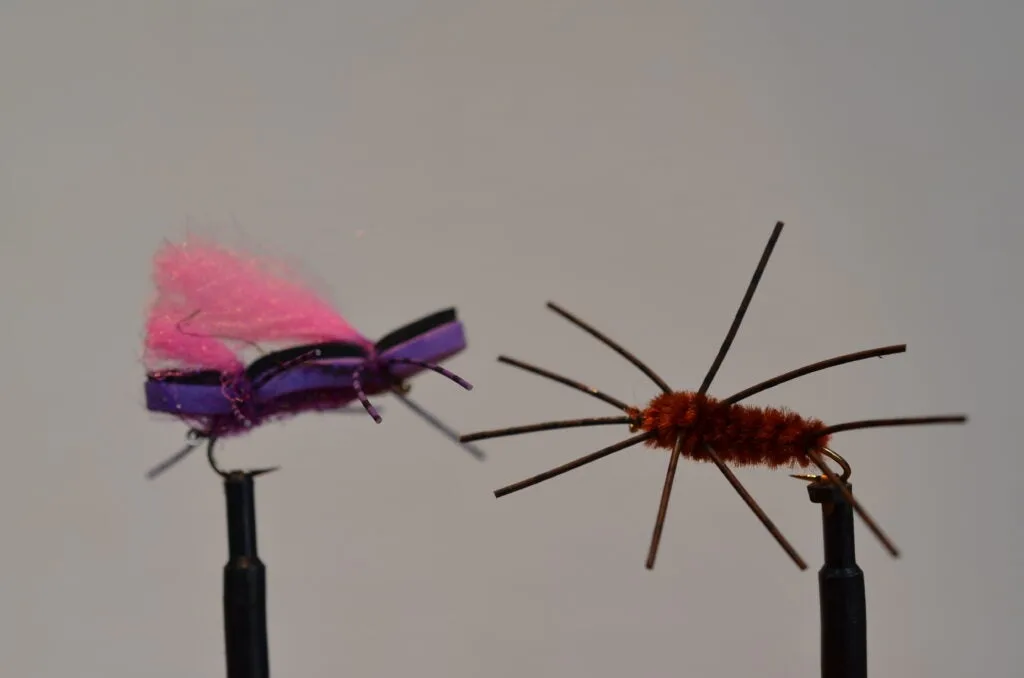
Chubby Chernobyl and Rubber Legs Nymph dry-dropper rig Morgan Lyle
There’s no ant on earth as big as a Chubby Chernobyl, a fact that means nothing to the big trout that eat them regularly on Western rivers
. For our purposes, that big foam body will support just about any fly you want to hang from it, and that wing is visible from way farther than you or I can cast.
Tackle Considerations
Your regular trout rod will work fine for dry-dropper fishing. A 9-foot leader will turn the two-fly rig over more easily than the 12-footer (or longer) that you may use for dry-fly fishing. You can save time on the stream by making your New Zealand or tippet-ring dry-dropper rig at home; several companies sell inexpensive spools or holders designed to keep them neat and ready to tie on.
**Read Next: The Best Trout Fly Rod for Rivers, Streams, and Lakes
**
Naturally, if you’re committed to fishing deep with a large streamer, a dry-dropper rig will make no sense. Likewise, if your game is precision casting to rising trout during a good hatch, you may not want to bother tying a nymph to your dry fly. But on those days when trout rise only sporadically and you need to reach below the surface to get their attention, a dry-dropper is more fun than an indicator—and might just increase your catch rate.

